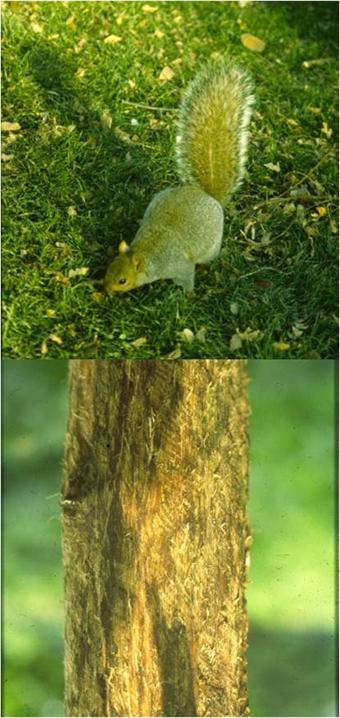Removing Aliens needs Science and Community Support
Righting the Wrong: Removing Gray Squirrels to Restore Reds

A young beech with the bark on its stem removed by a grey squirrel (above) does not survive.
The North American gray squirrel has successfully invaded most of Britain, and is expanding towards Switzerland and France from an unfortunate release in Italy. This invader builds up densities that kill off young native beech, oaks and other native trees by bark stripping, and has replaced the native Eurasian red squirrel through disease and competition. At first it was thought that risk of disease (which kills red but not gray squirrels) required gray squirrels to be removed over large areas before red squirrels could be restored, and that people would not tolerate this removal.
However, it was discovered that disease is rare in gray squirrels at low density, so that reds can recolonise as soon as grey squirrels numbers are substantially reduced. Moreover, if good information on this process is spread through local communities, people will report the last gray squirrels that remain as a threat to their cherished native species. Careful research, and its application through vigorous engagement of local people, may be the key to removing many invasive alien species.
Himalayan Balsam and Japanese Knotweed?
Himalayan Balsam can be dug out, as a good community conservation project. Knotweed is very deep-rooted and resists most herbicides except ICADE from Dow Chemicals.
On the Web
A factsheet on invasive alien species is available in most European Union languages from European Commission.
More extensive information from European Commission in English, with summary in other languages
Like Naturalliance, this European Commission project has continued to be run by IUCN and other partners.